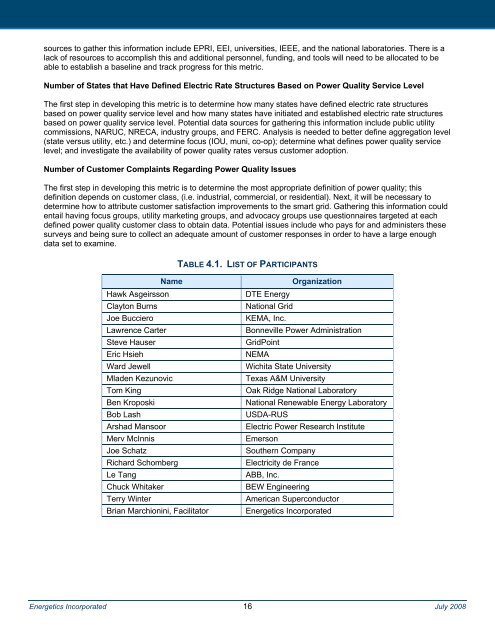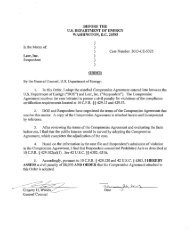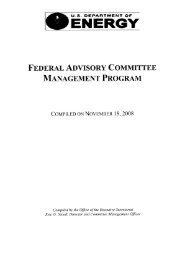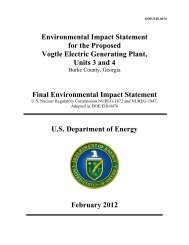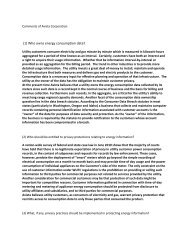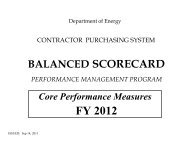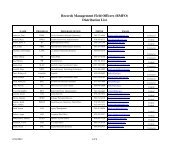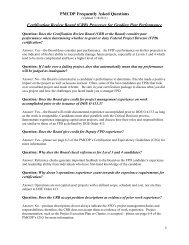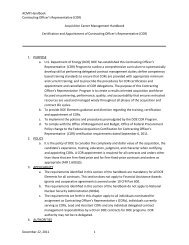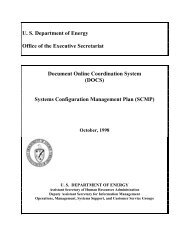Metrics for Measuring Progress Toward Implementation of the Smart ...
Metrics for Measuring Progress Toward Implementation of the Smart ...
Metrics for Measuring Progress Toward Implementation of the Smart ...
Create successful ePaper yourself
Turn your PDF publications into a flip-book with our unique Google optimized e-Paper software.
sources to ga<strong>the</strong>r this in<strong>for</strong>mation include EPRI, EEI, universities, IEEE, and <strong>the</strong> national laboratories. There is a<br />
lack <strong>of</strong> resources to accomplish this and additional personnel, funding, and tools will need to be allocated to be<br />
able to establish a baseline and track progress <strong>for</strong> this metric.<br />
Number <strong>of</strong> States that Have Defined Electric Rate Structures Based on Power Quality Service Level<br />
The first step in developing this metric is to determine how many states have defined electric rate structures<br />
based on power quality service level and how many states have initiated and established electric rate structures<br />
based on power quality service level. Potential data sources <strong>for</strong> ga<strong>the</strong>ring this in<strong>for</strong>mation include public utility<br />
commissions, NARUC, NRECA, industry groups, and FERC. Analysis is needed to better define aggregation level<br />
(state versus utility, etc.) and determine focus (IOU, muni, co-op); determine what defines power quality service<br />
level; and investigate <strong>the</strong> availability <strong>of</strong> power quality rates versus customer adoption.<br />
Number <strong>of</strong> Customer Complaints Regarding Power Quality Issues<br />
The first step in developing this metric is to determine <strong>the</strong> most appropriate definition <strong>of</strong> power quality; this<br />
definition depends on customer class, (i.e. industrial, commercial, or residential). Next, it will be necessary to<br />
determine how to attribute customer satisfaction improvements to <strong>the</strong> smart grid. Ga<strong>the</strong>ring this in<strong>for</strong>mation could<br />
entail having focus groups, utility marketing groups, and advocacy groups use questionnaires targeted at each<br />
defined power quality customer class to obtain data. Potential issues include who pays <strong>for</strong> and administers <strong>the</strong>se<br />
surveys and being sure to collect an adequate amount <strong>of</strong> customer responses in order to have a large enough<br />
data set to examine.<br />
TABLE 4.1. LIST OF PARTICIPANTS<br />
Name<br />
Hawk Asgeirsson<br />
Clayton Burns<br />
Joe Bucciero<br />
Lawrence Carter<br />
Steve Hauser<br />
Eric Hsieh<br />
Ward Jewell<br />
Mladen Kezunovic<br />
Tom King<br />
Ben Kroposki<br />
Bob Lash<br />
Arshad Mansoor<br />
Merv McInnis<br />
Joe Schatz<br />
Richard Schomberg<br />
Le Tang<br />
Chuck Whitaker<br />
Terry Winter<br />
Brian Marchionini, Facilitator<br />
Organization<br />
DTE Energy<br />
National Grid<br />
KEMA, Inc.<br />
Bonneville Power Administration<br />
GridPoint<br />
NEMA<br />
Wichita State University<br />
Texas A&M University<br />
Oak Ridge National Laboratory<br />
National Renewable Energy Laboratory<br />
USDA-RUS<br />
Electric Power Research Institute<br />
Emerson<br />
Sou<strong>the</strong>rn Company<br />
Electricity de France<br />
ABB, Inc.<br />
BEW Engineering<br />
American Superconductor<br />
Energetics Incorporated<br />
Energetics Incorporated 16 July 2008


